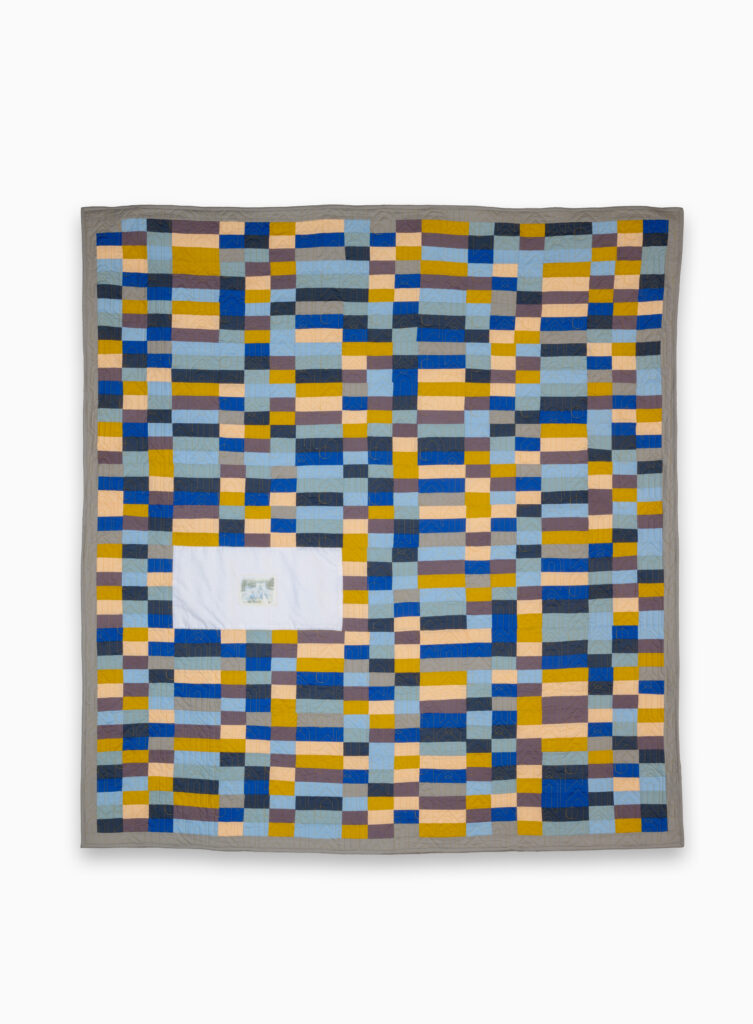Right(ful) Place: Quilting Tomorrows Through Yesterday’s Images
Envisioning the future through kinship in the visual culture of Kehayr Brown-Ransaw
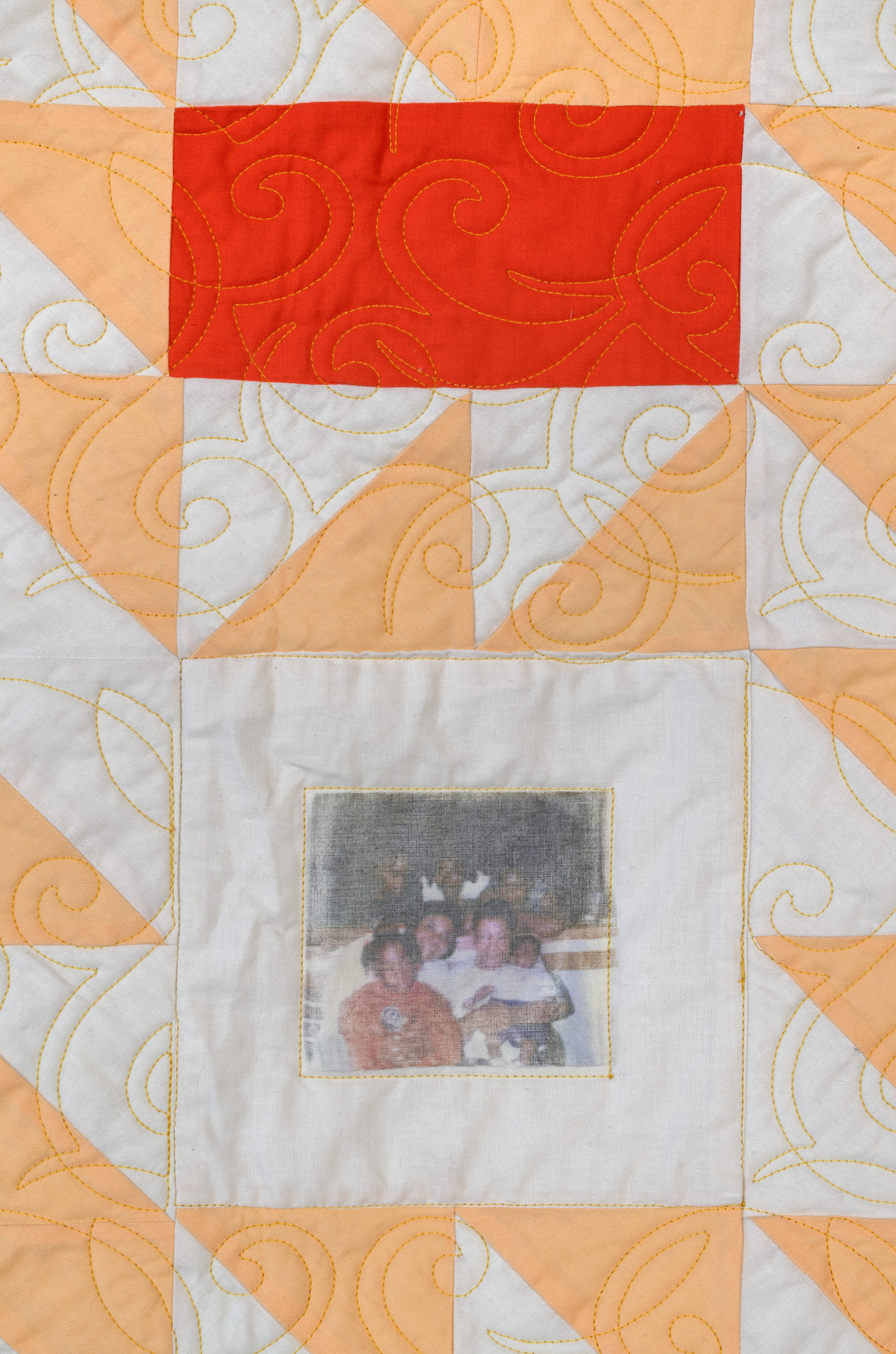
Remember me in stories—not the first time we met, not the last, a time in between. Our moment here is small. I am too—a worldly thing among worldly things—
Michael Kleber-Diggs from Gloria Mindi1
An encounter with Kehayr Brown-Ransaw’s visual culture is to consider an archive that whispers into the future. Through these photographs of family, we all see the hopes and dreams of those who had the audacity to envision the future through kinship. This work is the cultural acumen of someone who is aware of how materials can be used to both reveal and conceal stories. The interdisciplinary works live somewhere between painting and textile, sculpture and drawing. They are based upon and incorporate images of family members. Blurred, blocked, gridded, quantified, compartmentalized: this culture expresses so much about the corners of our worlds that we might call togetherness.
These quilted works are a kind of data field. Through their existence, these visual data fields insist that our archives and photographs are time capsules. We experience chambers of information. Brown-Ransaw makes use of the emotional coolness of abstraction to weave between complex information systems, while integrating poetic titles like In a solitary life there are rare moments when another soul dips near yours as stars brush the earth. Poetry often disrupts the grip of the grid.
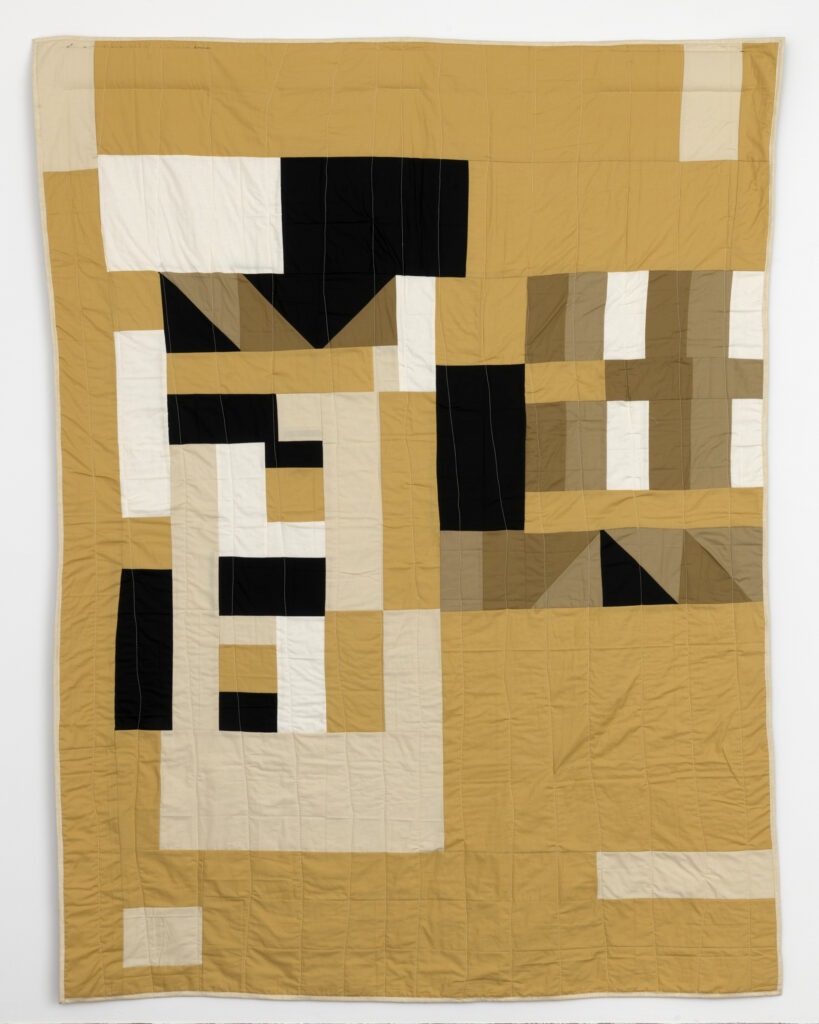
Familial ties are an incredible resource and can be a sustaining lifeforce for how we orient ourselves in the world. Often, familial construction is associated with resources, power, inheritance, and connection. These aspects of being a part of a family, as humans have shown, are irresistible rhizomatic desires. It is easy to understand the importance of familial origins when they allow for social and material gains in society. Beyond this, for many persons—particularly those who have encountered and continue to encounter the effects of enslavement, apartheid, and genocide—family lineage is to be preserved and maintained with great intention. For historically oppressed peoples, being alive to reflect and celebrate a familial lineage is akin to having beat the odds that are so often skewed and have often bent in favor of imperialist and colonial forces.
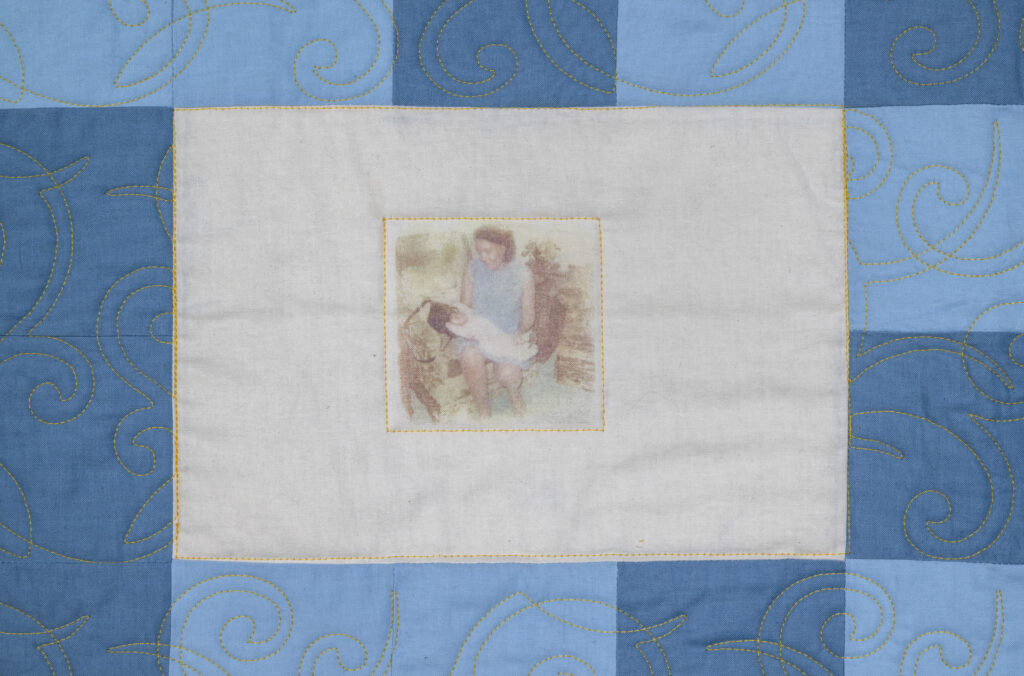
Clasping hands they hold close those disappearing things— slow dancing to Marvin’s mercy mercy me a mumbling river a blue patchwork quilt its ends ragged to touch and a bowl of honeydew melon saved for midnight when the kids are asleep. Did they ever touch Like bathwater on ankles
“I Try to Imagine Them Smitten,” Cynthia Manick, No Sweet Without Brine2
When I consider one of these works, a blue and cream field of grids, I hold many questions. A photo transfer in the center reveals a motherly figure who in her lap delicately cradles an infant. The infant levitates. Both mother and child seem to exist within and outside of time. Gridded panels surround them. This framing speaks to action and steadiness. The frame serves as a kind of protection. As I consider the piece entitled To know my mother and only know her name feels like not knowing myself at all, to know my mother and to know her heartbeat feels like knowing her warmth, I ask myself: how do we find family? What is it that allows us to feel so close to people who can often be more confounding than strangers? What does it mean to make kin? And where do our communities find refuge? There is another blue gridded piece, without a transferred image, to answer these questions. Its abstractions in cobalt, sky blue, and white are a kind of language revealing the complex answers.

Even if a system does not serve us entirely, we may come to know comfort in its false sense of stability. Family, as many know, can be created by careful connection and reunion with souls that seem fit for our own. I consider here the influence of Gee’s Bend on Brown-Ransaw’s work. These artists offer a transcendent vision to the language of care. Their imprint shows us that contemporary art has the capacity to hold more deeply. Lucy Mingo and Mary Lee Bendolph stitched and blocked so Brown-Ransaw could sew and transfer. Photographs are a kind of glue that can remind us of who we are, who we were, and who we have the potential to be. I consider now what American photographer and academic Bill Gaskins wrote in “The Contest of Privilege” about the photographic image: “We are both spectators and producers in an age of photographs.”3
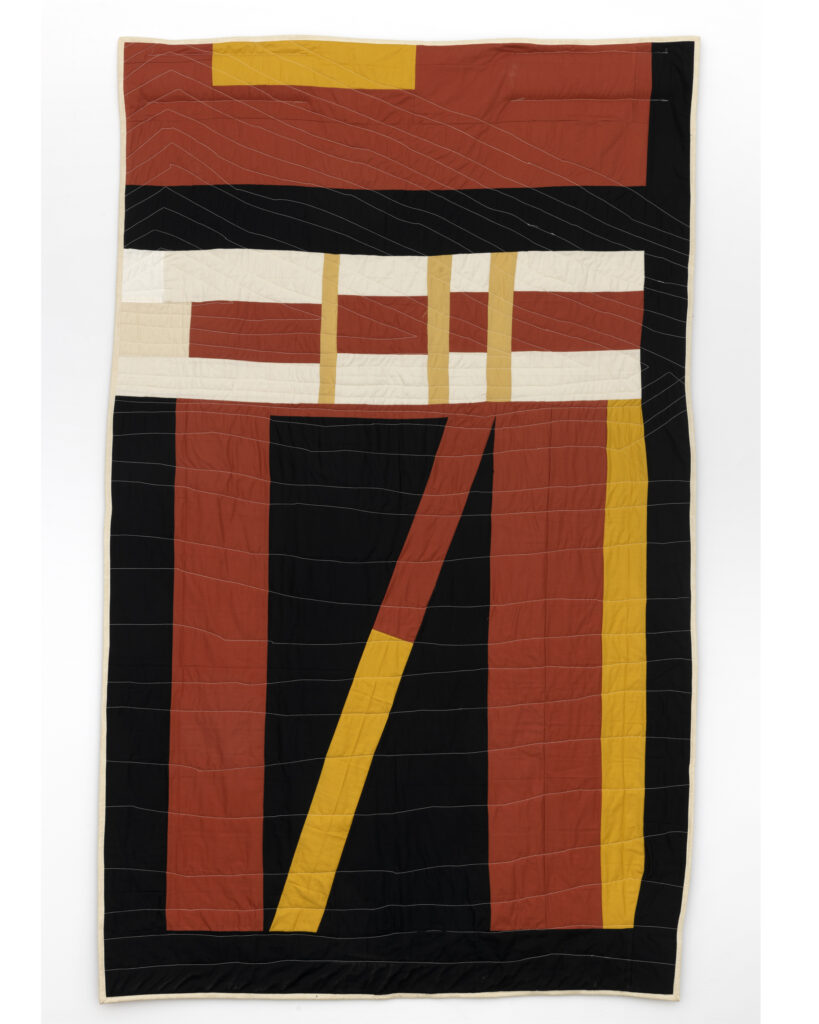
Brown-Ransaw recontextualizes images—the ways that we circulate them, the singularity of them, the multiplicity of them, and the memories that are encapsulated by the photograph. This visual culture points to the complexity of what it means to witness and be witnessed. For family provides an opportunity to engage in closely looking. Images, as guides, might even show us that which might unravel our unruly nests. Comfortable in discomfort, we know the jumble we call home. Here I move to consider the photograph as a kind of blanket for the mind. And here I also consider what a blanket represents. To offer a blanket to someone is a gesture of care. To receive a blanket from someone is to know a kind of tenderness. To make a blanket for someone is to know what gentleness our hands and hearts contain. Blankets can also hide and conceal, and can even become uncomfortable.
We must radically turn our attention to that which we love. Through this exactitude we begin a process of orientation. We introduce our bodies to places that might build insulation for our hearts to thrive. I think it is no mistake that Brown-Ransaw and I first met at a food co-op. That I knew Kehayr as Kehayr before I knew of his work is an advantaged way of knowing the significance of transparency to his way of making. Knowing this thoughtful and quiet person, his approach to making is no surprise. The intention and quietude also seems to reveal tenderness. This observation might seem inconsequential, yet I believe that we often find the people we connect with most at seemingly innocuous watering holes such as a grocery store. We meet the people who shape our lives in parks, on elevators, at part-time jobs, at full-time jobs that perhaps are not our vocation but do pay our bills, in Zoom meetings, at conferences, and on apps. We find each other sometimes beyond category and often by feeling our way in the unknowns of life. And similarly, Brown-Ransaw’s work seems to always follow a thread of finding. This is a binding thread that reaches into the future through the past. This thread curls and curves toward connection and reconnection. It stitches with winding complexities and reimaginations.
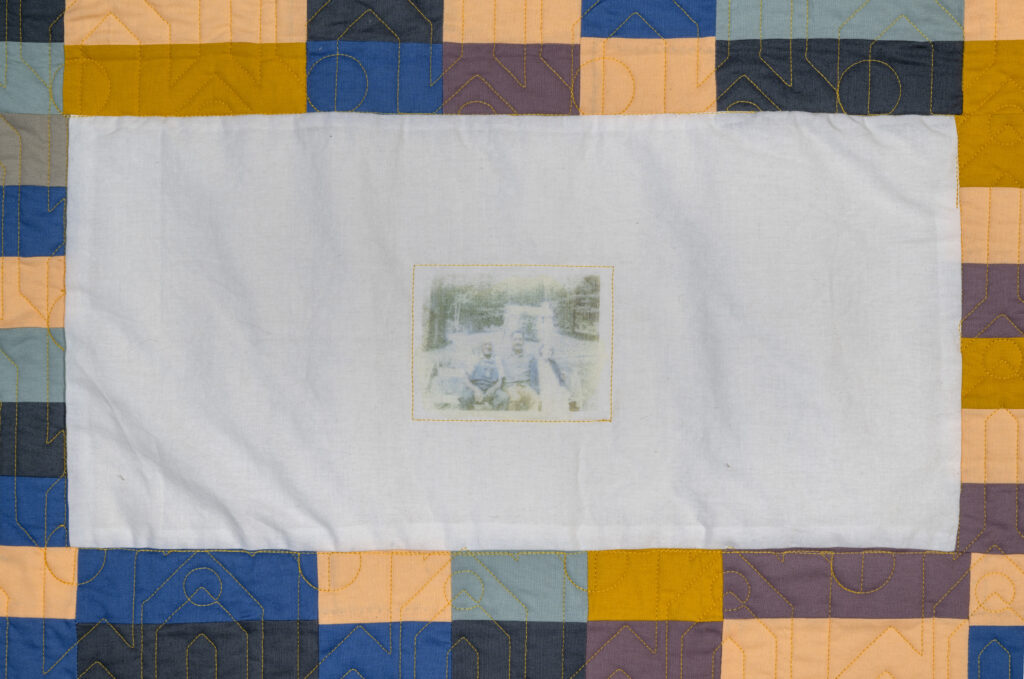
These works, like that of contemporary artist Sanford Biggers, are hinged on genus and genesis—on history and origin, renewal and stasis. Most specifically, I am considering Biggers’s quilt pieces from the exhibition Codeswitch, offered in 2020 at the Bronx Museum. These works harken to quilts as code and collaboration. An extension of data, these quilted works function similarly to Brown-Ransaw’s, as both are about the many hands that bind this kind of making. When you quilt and sew, you are never alone and always in communion. These are forces, forces that create crucibles for change and foster a kind of new-wave consciousness. The hands of ancestors, all quilting, create a kind of alchemy that crosses life experiences. Contained within the joys of making are the residual effects of human histories, cruelty, and inhumanity. In A Communion of the Spirits, Roland L. Freeman considers the generations of African-American makers behind the quilts that precede Brown-Ransaw and Biggers. Freeman attests: “Quilts were special, even magical to me,” he says. “They could heal and they could curse; they could capture history and affect the future; they could transform pain to celebration.”4 The hands that make now are the hands of the past and the hands of the future. The hands are ways of seeing.
There is an ordering to the world. We know this because when an event, structure, or moment comes to break our perceptions wide open, many people hold on tightly to maintain what they have come to know as normative. Here I consider sociologist Aldon Morris’s essay “American Negro at Paris, 1900” from W.E.B. Du Bois’s Data Portraits: Visualizing Black America. Morris relays the impacts of white conceptions of Black culture as they changed, and the realignment in cultural visibility within the context of the 1900 Exposition Universelle in Paris, France. At this fair, national achievements were a certain kind of flex: a way to see and be seen. As careful as Brown-Ransaw is within in his own work about situating himself within history, these quilted images similarly express a way of challenging the narrative assumptions we make when considering images of the Black experience. We see a matriarchical prioritization that seems to reaffirm the mothers, aunts, and grandmothers who hold these kinship ties together.
Morris says,
“At the turn of the century, portrayals of [B]lack people as subhuman, incapable of attaining great material and cultural achievements, were commonplace throughout the western world. Yet a different view emerged from the American Negro Exhibit at the Exposition. Here, African Americans were displayed in a series of photographs and artifacts as a proud people, dressed in splendor, as accomplished scholars and intellectuals studying the world with as much competence as one would imagine from students of Plato, Copernicus, Alexander Crummell, and Frederick Douglass… This designation of a [B]lack nation conveyed the idea of a community with its own integrity, intricate culture, and complex social organization… The exhibit violated white thoughts about [B]lack people, especially Americans only three decades removed from slavery.”5
The photograph not only served in 1900 as a kind of novel visual data, it was instrumental in the creation of new narratives. Even if those narratives were not fully embraced (and continue to be contested by white supremacy), white bodies still could not unsee these images that created an empowered narrative for Black, African, and African American bodies. By extension, Brown-Ransaw adds another voice—personal photographs that expand and challenge the narratives that the public receives about Black and African American experience.
Manicured, curated, clipped, secured, bound, and pressed: these images are analog pixels in reverse. Mirrored and enlarged, blurred and amorphous—it is with every gentle weave and stitch that I consider how those like Brown-Ransaw pick up these archives of inheritance. These hands deftly hinge, connect, and carefully touch material that becomes something beyond what the craft stores might have imagined it to become. These radical textiles move images of Black families into a space of becoming, always reaching forward and beyond. I like to imagine that no matter how Brown-Ransaw engages with material, each of his works is a square, or one part that adds up to the other. They will continue as he wills them to and they will create a kind of blanket. His hands gently sewing, as the culture he makes blankets walls, the Earth, and, in turn, the many universes that all of our bodies collectively generate.
